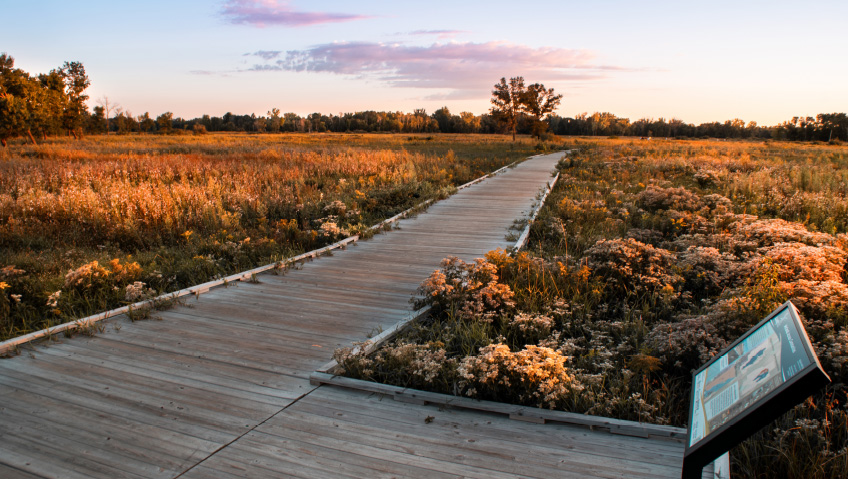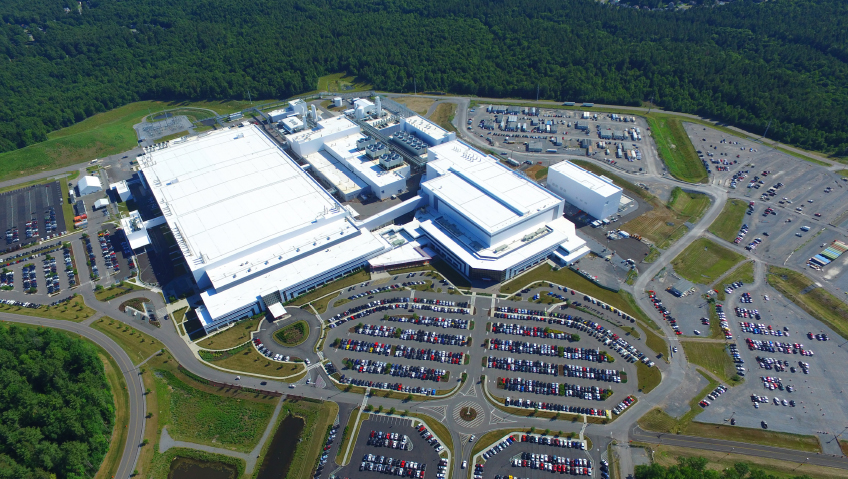The City of Blaine, Minnesota is one of the fastest-growing suburbs in the Twin Cities, and for good reason. It’s a destination of choice for sports and entertainment, and a great place to call home, thanks in part to its proximity, vitality, and vibrance—but also to the strategy that is guiding and sustaining its growth.
With a population of almost 75,000 and growing, Blaine is so much more than a commuter city. Through intentional placemaking and strategic investments, it has established itself as a full-service community with a character and economy of its own.
“We’re not just a suburban community that has large single-family homes. We have apartments; we have single-level villas for seniors; we have single-family homes for growing families; and everything in between. Our existing housing stock offers different price points to enter the market as well,” says Blaine’s Community Development Director, Erik Thorvig.
From Thorvig’s perspective, Blaine is a real draw. “Between location, cost, and the other amenities that we have here, it’s a very attractive place for builders to look at and a place where people want to locate.” The city’s leadership continues to do everything it can to enhance the quality of life that’s so appealing to residents and visitors alike.
Investing in the community
To sustain its present growth, several infrastructure investments are being made to strengthen the access and connectivity offered in Blaine via Interstate 35W, State Highways 65 and 610, and US State Highway 10, infrastructure that is critical to growth.
“When you talk about infrastructure, one of the biggest challenges we’ve had in Blaine is Highway 65, which is a major north-south corridor that runs right through the middle of our community,” says Thorvig of the state-owned highway that is traveled by over 55,000 vehicles every day.
Highway 65 actually carries the same volume of traffic as Interstate 35W but, unlike the interstate, has signals and other traffic restrictions that can lead to congestion and safety challenges. Fortunately, Blaine has received more than $100 million from the state and federal governments to invest in that corridor, and while Thorvig expects the work to cause some disruptions, “it will help our existing residents and drive other economic development activity as well.”
This investment has reinforced the State of Minnesota’s decision to relocate its new State of Emergency Operations Center in Blaine, moving existing operations away from downtown Saint Paul to take advantage of this connectivity.
Blaine is also investing in the community through the designation of redevelopment areas. The Northtown Mall, like many other shopping centers built in the 1970s, would benefit from a refresh and is envisioned to become a mixed-use destination of choice. One project injecting new life into this property is Asia Village, a 130,000-square-foot space that will feature an Asian grocery store, food court, retailers, and event venue. This is a model that has had success in other communities and will add life and culture to the area.
This is also true of the 105th Redevelopment Area. A sports entertainment district, the 60-acre mixed-use redevelopment will bring new restaurants, hospitality, entertainment, and residential to the area surrounding the National Sports Center (NSC), which has been a beacon for development since the 1990s. The neighborhood is designed to be walkable and will boast a unique character of its own playing to the area’s many strengths, particularly its sports-tourism draw.
The draw of sports
From a development standpoint, sports tourism driven by the National Sports Center has been a pillar of the surrounding community. The world’s largest amateur sports facility, it offers over 100 unique sports programs and events including countless national and international competitions that draw more than four million visitors to the city each year.
“It has turned into a sports entertainment hub in the Twin Cities metro area and the primary driver originally for that was the National Sports Center,” says Thorvig of the 600-acre sports campus.
As the most visited sports facility in the state, it is revered by visitors and locals alike, as 90 percent of participants are from the state of Minnesota. This generates over $70 million in annual visitor economic impact—an impact that just keeps growing.
The NSC plays host to the Target USA Cup, one of the largest amateur soccer tournaments in the world, which draws countless individuals and families to the area, and since ice rinks were added in the early 2000s, the community impact of the complex has continued to grow. Now, the world’s largest indoor ice arena of its kind, with eight sheets of ice under one roof, is home to the USA Women’s Olympic Hockey Team and serves as a training facility for athletes of all skill levels.
In total, the facility features 17 artificial turf fields and more than 30 grass fields as well as the M Health Fairview Dome, which, at 110 feet tall, is the largest of its kind in the Western Hemisphere. It has the space to house two full-size soccer fields and two full-size baseball diamonds. There is also a 58,000-square-foot NSC Sports Hall and a 5,000-seat stadium that hosts countless events.
Blaine is also home to Victory Links Golf Course, an 18-hole championship golf course and the only PGA-Tour designed course open to the public in Minnesota. It welcomes the best golfers in the world each July. The course hosts the qualifying round for the 3M Open held the same week at the TPC Twin Cities.
Room to grow
As a growing community, Blaine is fortunate to have the space to expand. Over the last several years, there has been a great deal of industrial investment, a testament to the pro-business climate, the forward-thinking leadership, and the growth plan that is successfully being implemented.
As Economic Development Specialist Ruth Tucker notes, “We’ve had about 600,000 square feet of new industrial space come online over the last three or four years and a lot of it is filling quite quickly. We’ve had one building that was completely leased before it was even built and two or three others that were fully leased shortly after,” she says.
“A lot of those spaces are attracting businesses that each bring in a hundred jobs or more to the city, and there are three, sometimes four, companies in each building, so we have a lot of growth from our industrial sector—specifically manufacturing.”
Despite the low industrial vacancy rate, all eyes continue to be on Blaine. With strong software and MedTech sectors, the city is taking full advantage of its location in the Minnesota Technology Corridor along Interstate 35 to become a hub of its own, attractive to educated professionals and skilled talent who value the quality of life it has to offer.
The community is projected to grow by 21.4 percent through 2040, which is reflected in not only population growth but economic growth as well. At full build-out, which is anticipated for 2040, Blaine is expected to have 87,000 residents, but the additional population should not place any strain on the services and amenities on offer.
“Some suburbs grow too fast, and they can’t manage that growth, but our growth has been metered to a point that we’re not getting in over our head or out in front of our skis,” explains Thorvig. “Fortunately, for us, primary functions like our water and sewer systems already exist and can handle the growth that we’re expecting.”
Loving the lifestyle
That’s just what the lucky residents of Blaine have come to expect—the necessary services and amenities, a strategic plan, and a continued focus on elevating their quality of life.
This Minnesota city’s leadership continues to purposefully curate economic opportunities and timely investments in infrastructure and capacity, adding to the economy and lifestyle so loved by its residents and the many individuals who cross the state, country, and world to visit and take in all that Blaine has to offer.






